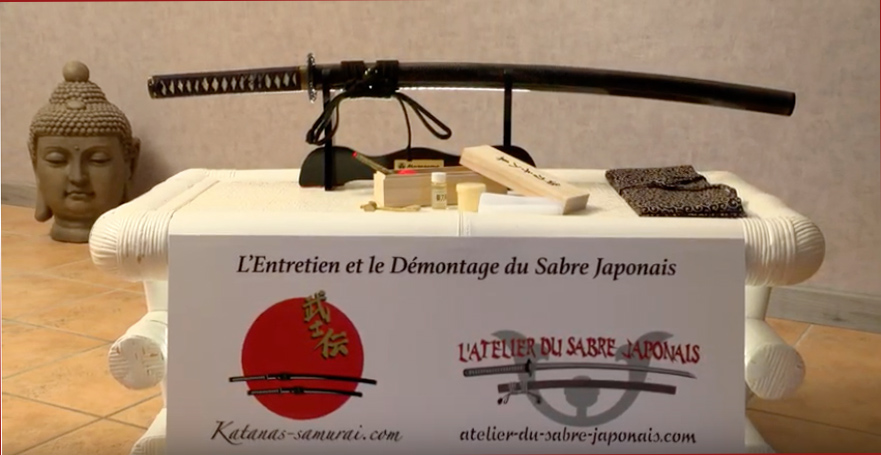- Katana 1€ to 79€
- Katana ONE PIECE
- Katana 80€ to 199€
- Katana 200€ to 599€
- Katana over 600 €
- Katana Custom
- Iaito - 模擬刀
- Wakizashi
- Tanto
- [+] Parts katana
- [+] Katana Accessory
- Engraving katana
- [+] Ninja
- [+] Chinese weapon
- [+] Wooden weapons
- [+] Knife
- [+] Outfits
- [+] House and Objects
- Médiéval Sword
- Military saber
- Home
- Profile
- Services
- Help
- Log in
- **Cart**
- What a difference in a katana and an Iaito
- The different types of steel
- How to choose your katana
- Accessories and maintenance of Iaito and katana
- Little katana dictionary
- What disciplines to practice with a katana or an iaito
- Musashi Miyamoto the greatest samurai Japan has ever known
- The laikidoka sword: the bokken
- Kendo, the legacy of the samurai
- The making of a katana
- The Habaki of the katana
- The Kanjis
- Budo
- The Saya of the katana
- Kyudo
- The Yumi
- The Hamon of the katana
- The Tsuba of the Katana
- How to measure a katana or an iaito
- The Sageo of the katana
- The history of the Japanese sword - 1
- The history of the Japanese sword - 2
- Custom katanas and iaitos
- Chanoyu, the Japanese tea ceremony
- The Iaido
- The boshin war or the last samurai
- The best incense from Japan
- Renovation of Japanese swords
- Ninja
- FAQ
- Terms and conditions
- Site map
- Contact
- Useful links
- Private life
- Clubs & Communities
Maintenance of ïaito and katana
-----------------------------------------------------------------------

The ïaito is a training sword which therefore does not have the same qualities as a shinken (sharp sword) meaning divine sword. An ïaito has a light, well-balanced and flexible blade. It is not forged but cast and made of an alloy of zinc and aluminum or zinc and beryllium. We cannot therefore speak of "traditional manufacturing". Normally the zinc-aluminum or zinc-beryllium alloy does not require any maintenance other than a thin layer of oil. However, the ritual of cleaning the katana is part of the teaching of the art and the care given "as on a real one" does not harm either the sword or the practitioner. It also makes it possible to check the good condition of the weapon. So how do you maintain your ïaito like a shinken? You must first obtain a maintenance kit. This kit includes at least choji oil, uchiko and nugui-gami. It can be completed with a mekugi-nuki and a katana-makura.
Choji oil is a mixture of 99% mineral oil and 1% clover oil (for the scent). The use of pure clover oil can lead to oxidation of the steel.
The uchiko is the instrument that looks like a big lollipop. This is a small cloth bag containing powdered polishing stone. The nugui-gami is a very fine rice paper.
The mekugi-nuki is a small bronze hammer used to remove the mekugi and release the blade from the tsuka.
The katana-makura is a small cushion used to place the blade of the saber (I use a roll which was used for the tameshigiri).
The uchiko is the instrument that looks like a big lollipop. This is a small cloth bag containing powdered polishing stone. The nugui-gami is a very fine rice paper.
The mekugi-nuki is a small bronze hammer used to remove the mekugi and release the blade from the tsuka.
The katana-makura is a small cushion used to place the blade of the saber (I use a roll which was used for the tameshigiri).

Sometimes we want to push the maintenance a little further where it is necessary to replace certain parts (tsuba, mekugi, seppa, habaki). The tsuka must then be dismantled.
To achieve this without destroying your sword, you must first remove the mekugi (s) using the mekugi-nuki which is used as a hammer and as a hunt. We can thus recover the mekugi, in this case, in a sad state. It is this piece that holds the nakago in the tsuka. We can therefore easily understand its importance. To separate the tsuka from the nakago you can use a hammer and a wooden block.
Then you have to go up the ïaito. We start by engaging the habaki, then we place a seppa on the tsuba before engaging everything on the nakago and ending with a second seppa. The nakago is then engaged in the tsuka. A new mekugi is put back in place using the mekugi-nuki. Its measurement is taken using a pencil line, it is then removed and cut to the right size before being definitively put in place.
To achieve this without destroying your sword, you must first remove the mekugi (s) using the mekugi-nuki which is used as a hammer and as a hunt. We can thus recover the mekugi, in this case, in a sad state. It is this piece that holds the nakago in the tsuka. We can therefore easily understand its importance. To separate the tsuka from the nakago you can use a hammer and a wooden block.
Then you have to go up the ïaito. We start by engaging the habaki, then we place a seppa on the tsuba before engaging everything on the nakago and ending with a second seppa. The nakago is then engaged in the tsuka. A new mekugi is put back in place using the mekugi-nuki. Its measurement is taken using a pencil line, it is then removed and cut to the right size before being definitively put in place.
Video produced by katanas-samurai.com and the Japanese sword workshop
|
Comments (1)
|
|
David Torres
Hello,
I am looking for Saya matted for a iaito 2.30 can please advise and let me know if sell this size 2024-08-10
|




